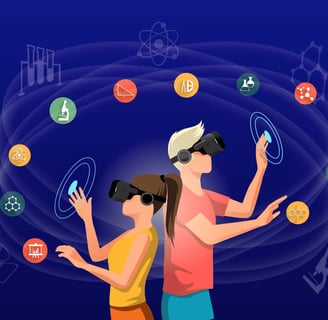Contributions of Virtual Reality (VR) to STEM Education
10/6/20231 min read


Title: Contributions of Virtual Reality (VR) to STEM Education
In today's rapidly advancing technological landscape, education is also undergoing significant changes. Particularly, STEM (Science, Technology, Engineering, and Mathematics) education is undergoing a transformation with the influence of virtual reality (VR) technology. In this article, we will focus on the benefits VR brings to STEM education.
More Concrete and Immersive Learning Experiences
VR provides students with the opportunity to experience abstract concepts in a concrete manner. In subjects like physics, chemistry, or biology, students can apply theoretical knowledge in virtual laboratories, resulting in a better understanding. This makes the learning process more effective and engaging.
Safe Simulation of Hazardous Experiments
Experiments in STEM fields can sometimes be dangerous. VR allows students to simulate these experiments safely. From chemistry reactions to space exploration, students can gain real-world experience in a virtual environment, enhancing their knowledge.
Boosts Learning Motivation
VR has the potential to make the learning process more enjoyable. Virtual worlds and interactive visuals capture students' interest, especially in challenging topics, which in turn, boosts motivation.
Enhances Collaboration and Teamwork Skills
Even in remote learning environments, VR can help students develop collaboration and teamwork skills. Through virtual classrooms or laboratories, students can come together, work on projects, and exchange ideas. This prepares them for the collaboration demands of STEM fields.
Offers Customized Learning Experiences
VR allows students to have personalized learning experiences by accommodating their learning pace and preferences. Each student can choose content that aligns with their interests, tailoring their learning experience.
In conclusion, virtual reality is making STEM education more effective and captivating. It enables students to visualize abstract concepts, safely simulate hazardous experiments, increase motivation, foster collaboration, and provides personalized learning experiences. The use of VR in STEM education is contributing to better learning experiences for students and better preparation for future scientists and engineers.
